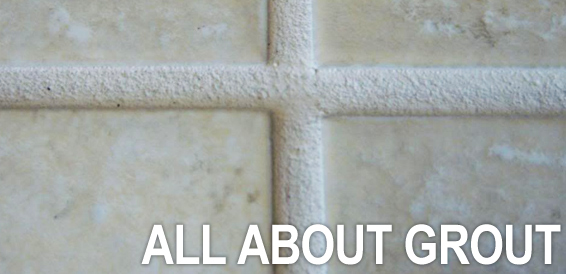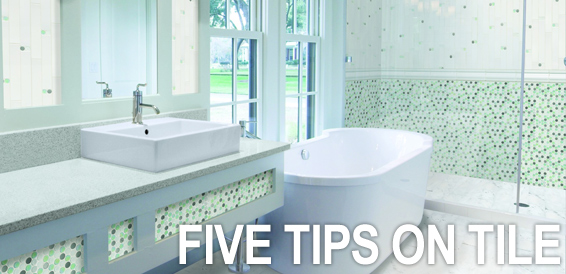All About Grout
What is grout?
Most grouts are cement-based fillers used to fill the joints between tiles. Typical width is 3/16″ – 1/4″ on floor tiles, and/or more on rustic tiles and clay pavers. Grout joints under 1/8″ require a non-sanded grout; larger joints require a sanded grout. Adding latex or polymers to a cementitious grout will increase its strength. Other types of grout include epoxy, furan and “Teflon” grout.
Grout characteristics
Grout is subject to shade variation and should not be expected to be uniform in color. Causes of shading include; the amount of water used in mixing & clean up, environmental effects such as sun, shade and humidity, and mortar depth.
Grout is durable. Most grouts are cement-based products; they are very hard & dense. Grout will withstand use (and yes, some abuse) for the life of your tile installation.
Grout is porous. The grout on your floor will not continue to look as bright and colorful as it will initially. Over time, the dirt that gets onto your floor will tone down the color of your grout.
Grout cures in 28 days. If you’re mop daily with clean water (NO CLEANER) the first week it will strengthen the grout.
Properly installed grout will provide years of worry-free use.
Grout as a design element
Choose your grout color carefully. The grout color will affect the overall appearance.
Choose a coordinating or slightly contrasting grout. A coordination grout color will create a more uniform look, while a sharp-contrasting grout will draw attention to the joint itself. Avoid very dark grouts with light tiles.
Neutrals and gray tones still look good over time. “Natural tones” are, well, closer to “natural dirt”, and they just look better as nature takes its course.
Grout “colorants” or “stains” are practical solutions to make grout more uniform in appearance.
Call a professional finisher for best results


